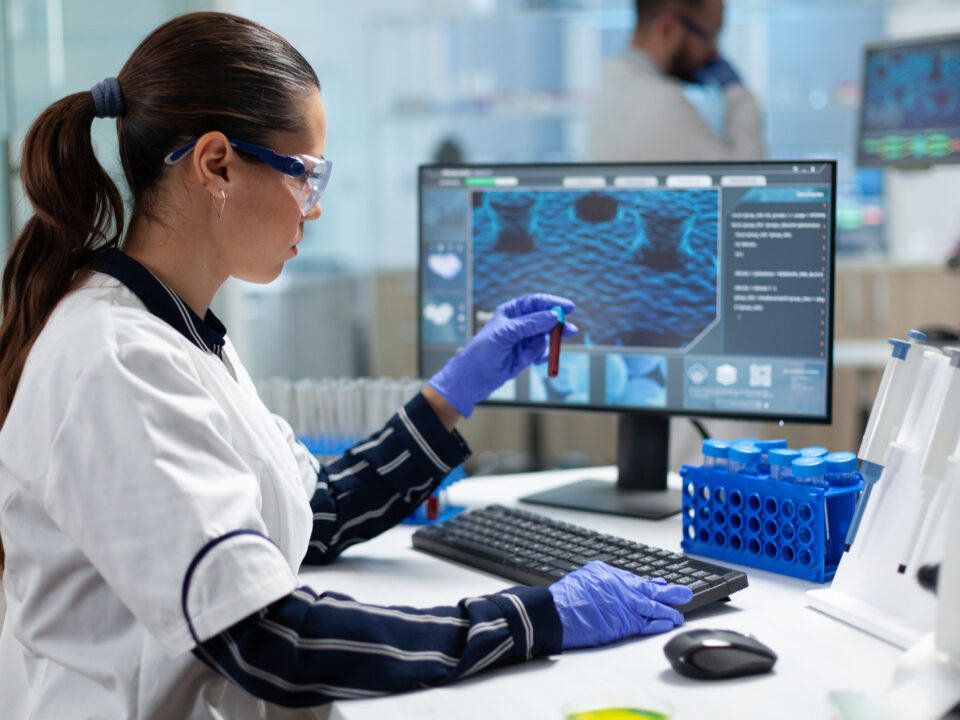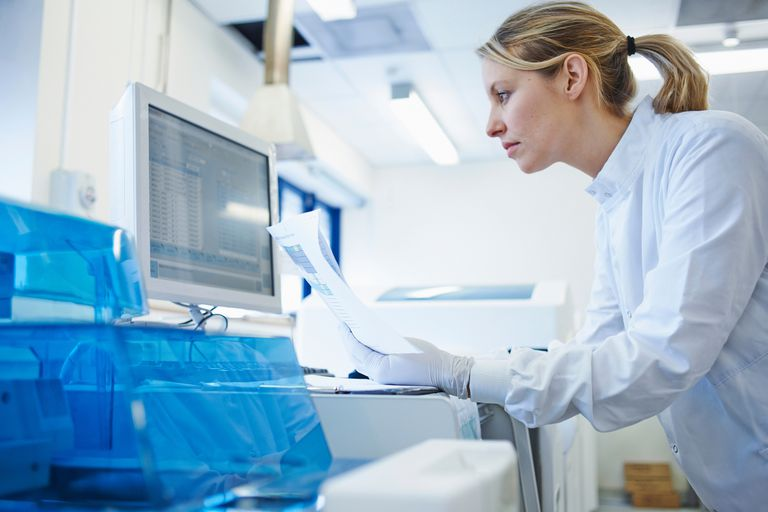The road to digital transformation is not particularly long or winding, but it is worth having a helpful roadmap.
Follow these steps to transform your laboratory successfully.
Assess the current state of the laboratory
It’s crucial to evaluate the situation in your lab to start the journey towards digital transformation. The assessment of the current state will help in characterizing the digitalization strategy. Since laboratories produce vast amounts of data, pay attention to how the data is processed in your lab.
It may be a good idea to represent the gathered insights as data flow diagrams. It will provide information on the data source, where it is stored, how it’s processed, reported, to whom, and to which systems it’s shared.
When analyzing the data, pay special attention to bottlenecks and unnecessary redundancies in the data flow. They are likely to cause delays, and consequently, cost your organization much money.
Finally, remember to describe the infrastructure, including the premises, devices, and equipment, and define their role in the processes. Don’t forget about the IT infrastructure, as it significantly influences your organization’s digital maturity.
Define what you need to digitalize
Once you examine and assess the lab’s current state, it’s time to start thinking about your goals. When starting the digitalization journey, you’ll realize the enormous scale of digital transformation. Setting clear goals will organize the whole process and define essential milestones and deadlines.
Goals should be specific, measurable, attainable, realistic, and have a timeline. One of the most common mistakes characteristic of this stage of the digital transformation is being too optimistic. If you’re too hopeful and over-enthusiastic about your goals, you may encounter difficulties reaching your deliverables, milestones, and deadlines. It may result in changing the already-defined strategy, consequently leading to a waste of money and time.
Another challenge is managing the goals. Eventually, you’ll notice that there are such many goals to achieve. In such a case, it’s advisable to prioritize the most important ones. You may need to estimate the value or benefits the individual digitalization step brings.
Assemble an action team and define an activity procedure
Once the goals are set, it’s time for action. An action team needs to be This teams’ responsibility will be to carry out the whole process and promote digital culture in your organization.
It’s crucial to assemble the most outstanding individuals who can act as digitalization promoters, inspiring others to educate themselves on this issue and apply new rules of conduct. Their job will also cover helping the laboratory personnel and management adapt to the new tools, systems, and protocols. The project team should work efficiently and avoid conflicts, disagreements, and misunderstandings.
Once you assemble your team, it can define a detailed strategy based on the gathered information from the initial two stages.
Learn about existing solutions
After assembling the action team and developing the initial strategy, you should search for the most suitable solution. Based on your lab assessment, create a list of possible solutions which you can implement to improve all the processes.
Take into consideration how the solutions you’re testing will work, communicate, and function together. By choosing a ready-made solution and adapting it to your organization’s needs, you entrust the digital transformation to the experts in the field. Their help is invaluable, as they can provide you with much-needed insights and support your organization with their extensive knowledge. Experts can help you keep a better eye on the budget and establish a clearly defined strategy and direction. Also, their experience with other companies can prevent you from repeating some common mistakes.
Evolve the digital culture in your organization
As surprising as it may seem, one of the most challenging challenges of implementing digital transformation is engaging lab workers. Digital transformation revolutionizes the way they work; no wonder there that they may be suspicious or even reluctant towards adapting to the innovations.
The key to gaining their enthusiasm and evolving the digital culture is focusing on transparency, inclusion, and openness. Make sure to address all the concerning issues and answer all the burning questions. Communicate all the changes and explain the advantages introduced with the digital transformation. Make all the elements of the process clear and understandable. Only then it’s possible to dispel all doubts and get the lab staff on board.
Implement the strategy
Depending on the size of your organization and digital maturity, implement your strategy on a large or gradual scale. Although you might feel confident enough to implement the strategy on a large scale, it may be reasonable to pace yourself, as the pilot phase will provide you with essential insights into what works and what should be improved.
Whichever option you choose, remember that the success of the implementation of innovative solutions depends on the reception. That’s why one should never underestimate the importance of cultivating the culture of digital transformation and educating the staff.
Time for Digital Revolution
Before you dive straight into the digital transformation, make sure that your lab and people working in it are fully prepared for that. Even though the revolutionary approach may be tempting, it’s better to take one step at a time. Once you’re done with all the preparations, the laboratory of the future is at your fingertips.




